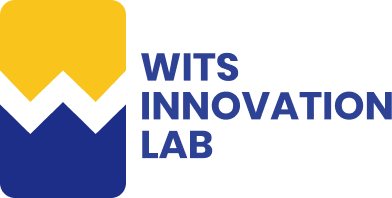Published - 2 years ago | 6 min read
Lean Thinking: What Teams Can Learn from Japanese Philosophies

If you're searching for a gold-standard approach to business process optimization, look no further. You're about to delve deep into the transformative philosophy of Lean Thinking—a concept so heavily inspired by Japanese philosophies it has remodeled the business world. Lean Thinking is no fad; it's an art of maximizing value and eliminating waste, deeply rooted in the fertile grounds of Japanese culture.
The Intersection of Lean and Japanese Philosophies
Kaizen: The Incremental Transformation
The first expert concept to focus on is Kaizen, a cornerstone philosophy that means 'change for the better.' Kaizen isn't a one-time event or annual meeting in the Japanese business sphere. It's a perpetual, continuous cycle aimed at incremental improvement. You might think, "Small changes, so what?" But here's the kicker: those seemingly negligible improvements compound over time, significantly impacting productivity and efficiency.
Applying Kaizen to your team involves a culture of persistent questioning and reevaluation. One month, you optimize code structure for better performance; the next month, you focus on streamlining communication protocols. Over time, these micro-improvements amplify into macro-results
Applying Kaizen to your team involves a culture of persistent questioning and reevaluation. One month, you optimize code structure for better performance; the next month, you focus on streamlining communication protocols. Over time, these micro-improvements amplify into macro-results

Just-In-Time: Optimal Resource Allocation
The Just-In-Time (JIT) strategy is the epitome of precision and planning. This methodology promotes the efficient use of resources by ensuring that the right materials arrive when needed. Too early, you've got a storage problem; too late, you're holding up the whole process.
In today's fast-paced environment, JIT isn't just about material supplies. It extends to time management, task allocation, and even decision-making. Incorporating JIT into your team dynamics allows you to synchronize your actions like a well-oiled machine. No moment is wasted; no resource is misallocated.
JIT isn’t just a manufacturing concept anymore; it's a philosophy of life. Encourage your team to see the bigger picture in every task. Implement agile frameworks and tools that facilitate just-in-time production and adaptability. This is not about hasty last-minute efforts; it's about calculated, strategic timing.
In today's fast-paced environment, JIT isn't just about material supplies. It extends to time management, task allocation, and even decision-making. Incorporating JIT into your team dynamics allows you to synchronize your actions like a well-oiled machine. No moment is wasted; no resource is misallocated.
JIT isn’t just a manufacturing concept anymore; it's a philosophy of life. Encourage your team to see the bigger picture in every task. Implement agile frameworks and tools that facilitate just-in-time production and adaptability. This is not about hasty last-minute efforts; it's about calculated, strategic timing.

Jidoka: Intelligent Automation
We're in the age of automation, but we often overlook the essence of "intelligence" in intelligent automation. That's where Jidoka comes in, a philosophy that marries automation with human ingenuity. The aim is to create self-correcting systems; when an anomaly occurs, the system identifies it and either fixes it autonomously or flags it for human intervention.
Imagine implementing Jidoka in your DevOps team. Automated testing is a given, but what if your system could automatically revert to a stable build upon detecting a fault during deployment? That’s next-level efficiency.
The Alchemy of Integrating Japanese Philosophies into Team Dynamics
You're acquainted with the philosophies. But how do you amalgamate these into a powerful, lean-thinking team?
Start small. Integrate simple automated checks within your workflows. But then elevate it; incorporate machine learning algorithms to predict potential flaws or suggest improvements. The key is to build systems that learn from anomalies rather than just flagging them.
Imagine implementing Jidoka in your DevOps team. Automated testing is a given, but what if your system could automatically revert to a stable build upon detecting a fault during deployment? That’s next-level efficiency.
The Alchemy of Integrating Japanese Philosophies into Team Dynamics
You're acquainted with the philosophies. But how do you amalgamate these into a powerful, lean-thinking team?
Start small. Integrate simple automated checks within your workflows. But then elevate it; incorporate machine learning algorithms to predict potential flaws or suggest improvements. The key is to build systems that learn from anomalies rather than just flagging them.

Cultivating a Kaizen Mindset
For Kaizen to take root, you must plant its seeds in the cultural DNA of your team. Promote a mindset that is insatiably hungry for improvement. It begins with the leaders; when the top echelons are invested in small but constant improvements, it trickles down, creating a cascade of positive change.

Lean Thinking Meets Muda, Mura, Muri: A Trifecta for Eliminating Waste
As you ascend the ladder of Lean proficiency, it's crucial to tackle the three Ms: Muda, Mura, and Muri. Originating from Toyota’s production system, these Japanese terms pertain to different types of waste you'll want to eliminate from your operations.
Muda: Pointless Complexity
Muda translates to 'waste,' in Lean Thinking, it refers to any activity that absorbs resources without adding value. If you're still holding onto old methods and processes simply because "that's how it's always been done," you're probably steeped in Muda. It's time to question each practice, challenging its necessity and value.
Mura: Inconsistency in Process
Mura, or 'unevenness,' comes from irregularities or fluctuations in your operation. To understand Mura, think of the stop-and-start traffic in a congested city. Just like traffic lights can disrupt the flow of vehicles, inconsistencies in project timelines, resource allocation, or team communication can slow down productivity.
Muri: Overburdening Resources
Muri signifies 'overburden,' it often comes from poor planning or unrealistic expectations. Overloading your team or systems is not an example of hard work; it's a recipe for burnout and inefficiency.

Tackling the Three Ms: Strategies for a Lean Team
By now, you understand that a Lean team is not an inherently overworked or under-resourced team. On the contrary, a Lean team is optimized, agile, and prepared for challenges. The next question is, how do you use Japanese philosophies to tackle Muda, Mura, and Muri?
Streamlining with Poka-Yoke: Error-Proofing the Lean Way
Poka-Yoke is another gem from the Japanese lexicon for 'error-proofing.' The philosophy aims to eliminate mistakes by redesigning processes to make it virtually impossible to make an error. For instance, imagine incorporating Poka-Yoke in your code review process. You could use pre-commit hooks to ensure only standardized and tested code gets committed, thus preventing possible errors at the source.

5S for Ultimate Organization
Suppose you've ever been in awe of the immaculate organization of a Japanese tea ceremony. In that case, you'd understand the importance of 'Seiri,' 'Seiton,' 'Seiso,' 'Seiketsu,' and 'Shitsuke'—collectively known as 5S. These terms include sorting, setting, shining, standardizing, and sustaining. It's not just about physical space; 5S can also be applied to digital environments,. Implementing a strict file-naming protocol or establishing a project management system are examples of 5S in action.

Heijunka: Levelling the Field
Heijunka is the Japanese strategy for workload leveling. It essentially means distributing tasks evenly over a specific period, thus eliminating Mura. Using a tool like Kanban, you can visually map out all tasks, allowing the team to pull new tasks only when they have the bandwidth. This ensures that no one is overburdened, embracing the essence of Muri elimination.

Reaping Long-term Benefits: The ROI of Lean Thinking
You've implemented these complex strategies and woven these philosophies into your team’s fabric. But what's the return on this intricate investment?
Future-Proofing Your Team
Lean Thinking, fortified by Japanese philosophies, equips your team for future challenges. The Kaizen mindset keeps you ahead of the curve, JIT ensures resource optimization, Jidoka paves the way for intelligent automation, and the three Ms keep your operations waste-free.

Unlocking Unprecedented Innovation
When your team is free from unnecessary burdens and waste, guess what fills the vacuum? Innovation. Creativity thrives when given room to breathe. A Lean team is not just efficient; it's also incredibly innovative.

Conclusion
As the boundaries between our personal and professional lives continue to meld in the era of remote work, companies must redefine their approach to digital wellness. Simple metrics like 'screen time' no longer suffice; what is required is a multi-dimensional strategy that accounts for physical health, emotional well-being, and work-life balance. The tips outlined in this article offer a comprehensive framework that every company can employ to build a healthier, more sustainable digital work environment for their employees.
By adopting these strategies, we can look forward to a future of work that is more productive and human-centric. The challenge of digital wellness is one that we face collectively, and the solutions, as we've seen, are both innovative and accessible. It is a collective journey towards a balanced digital life and a journey worth taking.
By adopting these strategies, we can look forward to a future of work that is more productive and human-centric. The challenge of digital wellness is one that we face collectively, and the solutions, as we've seen, are both innovative and accessible. It is a collective journey towards a balanced digital life and a journey worth taking.

Written by / Author
Manasi Maheshwari
Found this useful? Share With
Top blogs
Most Read Blogs
Wits Innovation Lab is where creativity and innovation flourish. We provide the tools you need to come up with innovative solutions for today's businesses, big or small.
© 2025 Wits Innovation Lab, All rights reserved
Crafted in-house by WIL’s talented minds

